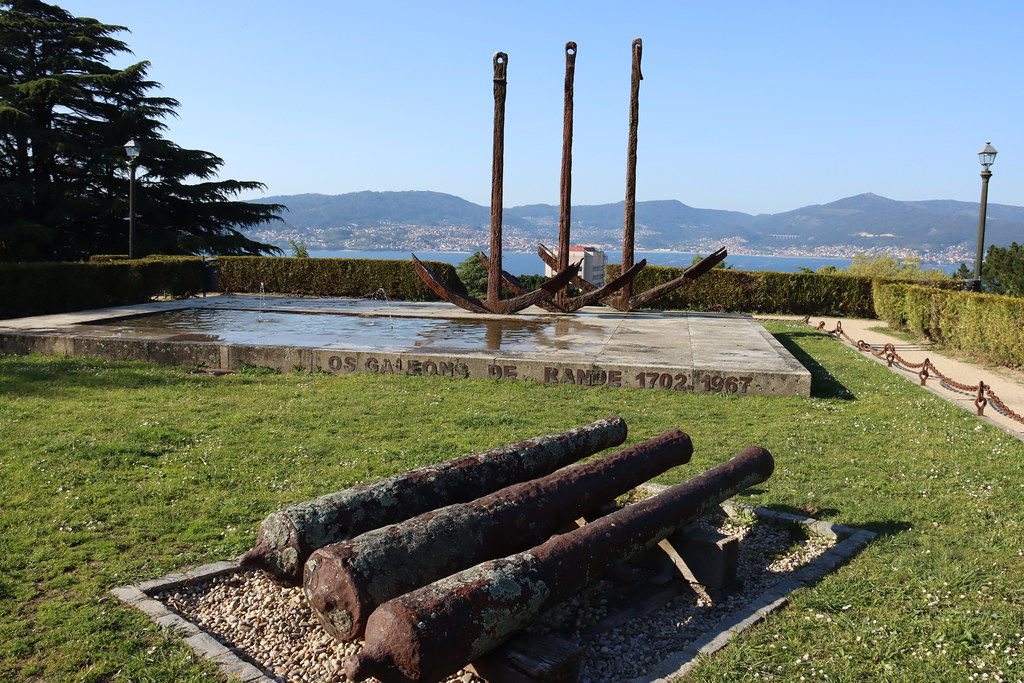The Monument to the Galleons of Rande, one of the most famous symbols of the city of Vigo
On October 23, 1702, within the framework of the War of the Spanish Succession, the Ría de Vigo was the scene of a great naval battle.
That battle pitted two sides: a fleet made up of 20 Spanish ships (including 17 galleons) and 19 French ships, against a fleet made up of 39 English and 10 Dutch ships.

The Anglo-Dutch fleet had more ships and more than twice as many men and ended up winning, with the Rande Strait being the central place of the battle, since the Spanish-French fleet had taken refuge in the San Simón Inlet, in the eastern part of the strait.

The Battle of Vigo Bay gave rise to legends about treasures that were supposedly on board the galleons sunk there. These legends inspired the French writer Jules Verne, who in his book "Twenty Thousand Leagues Under the Seas" points out the Vigo Estuary as a gold supply point for Nemo, the captain of the Nautilus.

These legends have led to successive attempts to recover the wrecks of ships sunk in Rande. The first successful rescue took place in 1728, recovering a French ship in which there was no treasure. Successive expeditions in the 19th and 20th centuries managed to rescue some objects, including several anchors and some cannons, but recovering the sunken ships in Rande is almost impossible due to the muddy bottom of that part of the Ría de Vigo.

In 1967, a monument to the Rande Galleons was inaugurated in Vigo, a work of architect Desiderio Pernas, a native of this Galician city. The monument includes three anchors and five cannons recovered from the Rande wrecks (two cannons on one side of the monument and three on the other side). The monument is located on Monte del Castro, in front of the Baluarte del Diamante del Castle of El Castro, and from it start the stairs that go down to the town hall building.

Today this monument is one of the most famous symbols of Vigo, and a place that I recommend you visit if you ever come to my city. The photos you see in this entry were taken by me in 2013 (the first two) and in 2021 (the remaining ones). Below these lines you can see its location on Google Maps:
|
Don't miss the news and content that interest you. Receive the free daily newsletter in your email: Click here to subscribe |
- Lo más leído
- A British fairytale ruin: the abandoned shoe house on the Isle of Wight
- The interior of the Statue of Liberty torch and the sabotage that canceled its visits
- The supermassive black hole of Phoenix A, the biggest known light-devouring monster
- A virtual tour of ancient Rome in full color, just as it was in its heyday
- The unknown Soviet female cosmonaut who died on a mission: history or hoax?
- A large collection of Volkswagen cars hidden in an abandoned mine in Switzerland
- An old Soviet military plane abandoned from 1971 on a Russian island near Alaska

 ES
ES





Opina sobre esta entrada: